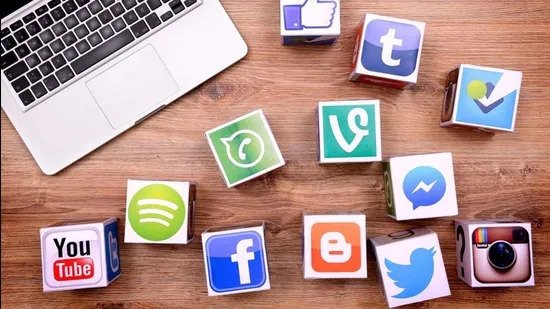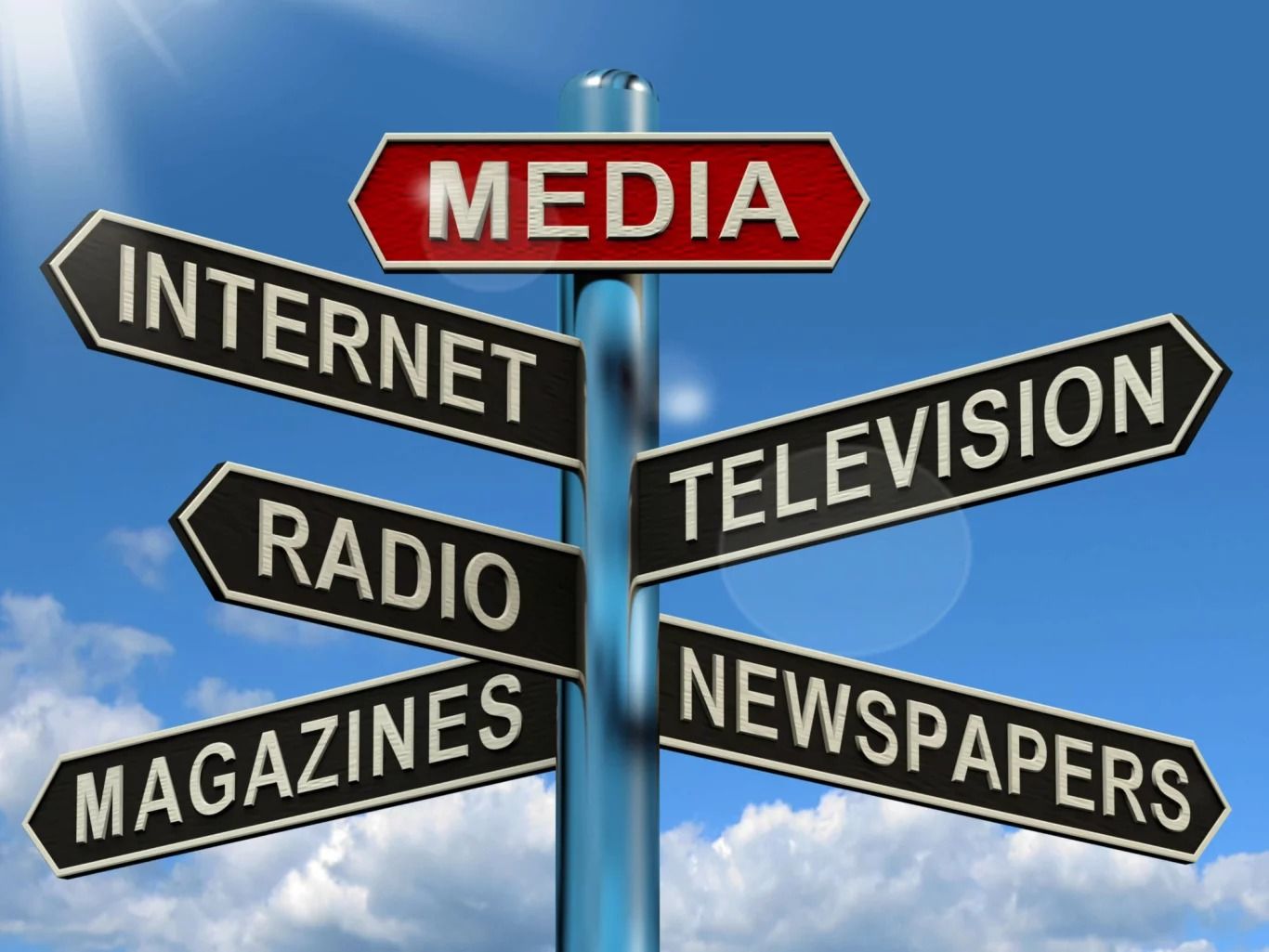Media is the plural form of medium, which (broadly speaking) describes any channel of communication.
There are several forms of media available today, although some have fallen into obsolescence already:
* Traditional media includes newspapers, journals, radio, television, magazines, and even billboards. Traditional media is broadly divided into two subcategories: print media and broadcast media.
* Print media is the oldest form of media and includes all types of printed paper publications, such as newspapers, magazines, books, reports, clinical journals, leaflets, essays etc.
* Broadcast Media was introduced at the beginning of the 20th century in the form of radio and (later) television. As the introduction of TV downsized the importance of radio as a means for people to access information in the form of news, broadcast TV is now starting to fall behind as online media sources take over.
* Digital media, which makes up an increasingly vast portion of modern communications, is comprised of intricately encoded signals that are transmitted over various forms of physical and virtual media, such as fibre optic cable and computer networks. Modern digital media include the Internet as a whole, but on a more granular level, “media” is used to indicate websites, blogs, podcasts, videos, digital radio stations, and mobile phones, as well as the communication methods used to transmit data such as instant messaging, video calls, and emails.
* Computer media is a term that is often used in informatics with several different meanings. It is used to describe the electronic devices used to store data, such as hard drives, USB drives, DVDs, CD-ROM, and floppy disks. It also refers to the transmission media (cables) used to link workstations together such as coaxial cables, fiber optic cables, and traditional electrical wires (twisted-pair wires). More broadly, all technologies used to communicate information such as videos, pictures, sounds, and presentations are often referred to as media or multimedia (if they combine different types of media).
* Mass media include all of those media channels which can reach a large number of people at the same time. Traditional mass media include TV and radio channels and national and international magazines, while digital mass media mostly refers to social media platforms and popular online magazines. Some find it reasonable to include some video games such as massively multiplayer online role-playing games (MMORPGs).
* Social Media have been mentioned already, as these platforms are included in both the mass media and digital media categories. They consist of applications and websites used by people to share content in real-time, using their computers or smartphones. They represent a revolutionary technology that influenced the last decade by allowing everyone to share virtually any kind of information at the global level.
.jpg)
Adorno and Horkheimer of the New York-based Institute for Social Research saw the media as a cultural industry that maintained power relations and served to lessen the “resistance standards” of cultural aesthetics by popularizing certain types of culture. The values perpetuated by the media were contradictory to the values of the radical Enlightenment tradition. The masses are “dumbed” by the banality of the media. Their ability to function efficiently as citizens in a democratic state is replaced by their ceaseless consumption of culture or products, or both.
According to Adorno, the listener to industrialised and commodified popular music is caught up in a standardized and routinized set of responses. In particular, Adorno argues that he or she is distracted and inattentive. In this sense, pop music is part of the everyday background of contemporary social life. For example, we do not listen to it in the way that musical experts think that we should listen to a Beethoven symphony, that is, by sitting down and giving it all our attention, and seeing how the parts relate to the whole in creating the kind of meaning that Beethoven intended to communicate.
Ferdinand de Saussure, Professor of General Linguistics, the University of Geneva, says that meaning can be found everywhere. All the social and cultural phenomena that surround us are not just material objects or events. They are objects and events which contain signs. Moreover, the objects and events are defined by a network of relations. We can decode meaning if we learn to read signs and appreciate relations.
“I am suggesting that we should treat all phenomena as though they were languages,” says Professor Saussure. “Just as languages have words which are brought together to form meaningful sentences by syntax and grammar, so material phenomena contain signs that are given meaning by a system of relations,” he adds. Elaborating the analogy, he describes all sign systems as “texts”
Semiology is concerned with how meaning is generated in “texts”. It deals with what signs are and how they function. It is a new language that may enable us to look at films, television shows, fashion, food, works of art, and much else in a new way. We may thus be better equipped to deal with codes, formulas, genres, the “language” of television, and the grammar of cinema.
Sign: an inseparable combination of a concept and a sound-image. A Sign must have physical forms, must refer to something other than itself and be recognized as a sign by people. A sign is divided into two components: the signifier which is its physical form perceived by our physical senses; and the signified which is the mental concept to which the sign refers.
Symbol: unlike a sign, a symbol does not have an arbitrary signifier.
Code: a system of signs based on culturally agreed rules. Codes allow specific cultures to communicate through the use of signs.
The selected units are combined as a syntagm that conveys meaning within specific cultural contexts.
Text: a signifying structure composed of signs and codes.
An open text has many different meanings which depend on the time, place, class, gender, politics and experience of the reader. Closed texts encourage a specific meaning permitting little space for the reader to generate different interpretations. Media texts are encoded by the sender and decoded by the receiver.
Context: the social, political and historical conditions which provide a structure and within which certain actions, processes or events are located and have meaning.
Reading: the process of interaction when a text is analysed as well as the final result of that process, the interpretation.
Intertextuality: the reading of a text in the light of others of similar nature. Intertextuality can create extra layers of meaning and associations leading to an understanding of a text that is based partly on what precedes it, or may follow it, or other media texts in other contexts. Intertextuality is often produced deliberately to create references that an audience can easily recognize.
Metaphor: a fundamental mode of communicating meaning in which a relationship between two things is suggested through analogy or a simile. Metaphors communicate the meaning of an unknown by transposing it into the terms of the known. Thus the metaphor “my love is like a red, red rose” transposes the known characteristics of a rose to what is unknown, “my love”. In films, thunder and lightning are often used as a metaphor for the inner turmoil of the characters.
Metonymy: another fundamental mode of communicating meaning. In metonymy, a relationship between two things is suggested by association, implying the existence of codes that enable the proper connections to be made. The word means “transposed names” or “substitute meaning”. Metonymy works by using parts or elements of something to stand for the whole.
Narrative: the process as well as the end product of story-telling and mental activity that organizes data into patterns or cause-and-effect chains of events. The narrative is an important feature of print and broadcast journalism where codes determine the structure, order and components of a story. The basic narrative structure of a news story is the same as that of a situation comedy or a detective show: in both cases, “a state of equilibrium is disrupted, the forces of disruption are worked through until a resolution is reached, and another state of equilibrium is achieved.” We make sense of our lives by rendering our lives as narratives. Biography, the narratives of other people’s lives, is an important way of giving meaning to our own lives.
Mediation: the act of channelling social knowledge and cultural values through an institution to an audience; the process of selection and shaping to create a range of meanings from public events. Through mediation, the media brings a certain perspective to bear on public issues at the expense of others. Mediation is a matter of symbolic exchange – an exchange that is mostly one-sided.
Genre: the categories of media products; specific types of books, film, television and radio programmes. Genres are identified by their conventions which the audience recognizes through regular contact. The term originated in literary criticism but was adopted by cinema studies. Television is exclusively genre-led.
Discourse: structured representation of events; structured and interrelated interpretation of social and cultural knowledge that expresses power relations. The term suggests that the very act of referring to, or interpreting, the world is also making the world.
Hence meaning in itself can be conveyed at several levels ranging from the personal to the political to the psychological and beyond depending on the mode or media of communication and the intent of both the communicator and the audience.

Comments